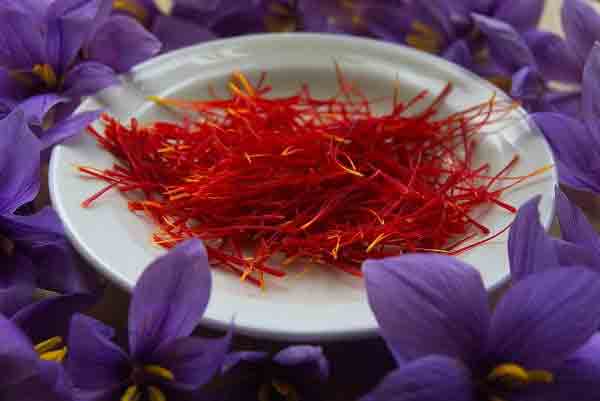Here is all you need to know about Saffron Bowl project
Hyderabad: The saffron bowl of India, so far confined to parts of Kashmir, has now spread its wings to parts of the North East through the focused efforts of the North East Centre For Technology Application & Reach (NECTAR). Read more about the initiative… North East Center for Technology Application and Reach (NECTAR) under Saffron […]
Published Date - 7 February 2022, 05:03 PM
Hyderabad: The saffron bowl of India, so far confined to parts of Kashmir, has now spread its wings to parts of the North East through the focused efforts of the North East Centre For Technology Application & Reach (NECTAR). Read more about the initiative…
North East Center for Technology Application and Reach (NECTAR) under Saffron Bowl project has identified a few locations in Arunachal Pradesh and Meghalaya for saffron cultivation.
The total cost of the whole project is Rs. 17.68 lakhs for Arunachal Pradesh and Meghalaya. NECTAR is an autonomous body under the Department of Science & Technology (DST) , which supported a pilot project to explore the feasibility of growing saffron in the North East region of India, with the same quality and higher quantity.
Why North- East
Initially, Saffron production was confined to very few and specific regions of Kashmir.Though the National Saffron Mission brought in several measures, the area of production was too low. There were not enough bore wells in the saffron growing regions.
India cultivates about 6 to 7 tonnes of saffron while the demand is 100 tonne. To meet the growing demand of saffron the Ministry of Science and Technology, through the DST, is now looking at extending its cultivation to some states in the Northeast (Sikkim now, and later to Meghalaya and Arunachal Pradesh).
There is a huge similarity of climate and geographical conditions between Kashmir and few regions of Northeast.
In Arunachal Pradesh, there is a good growth of organic saffron with flowers. In Meghalaya, sample plantations were grown at Cherrapunji, Mawsmai and Lalingtop sites. It will also diversify agriculture and provide new opportunities to the farmers in the North-East.
Importance of Saffron
Saffron is a plant whose dried stigmas (thread-like parts of the flower) are used to make saffron spice.
Saffron cultivation is believed to have been introduced in Kashmir by Central Asian immigrants around the 1st Century BCE.
It has been associated with traditional Kashmiri cuisine and represents the rich cultural heritage of the region.
It is a very precious and costly product. In ancient Sanskrit literature, saffron is referred to as ‘bahukam’. It is cultivated and harvested in the Karewa (highlands) of Jammu and Kashmir.
Importance
It rejuvenates health and is used in cosmetics and for medicinal purposes.
It has been associated with traditional Kashmiri cuisine and represents the rich cultural heritage of the region.
Conditions of Cultivation

In India, saffron Corms (seeds) are cultivated during the months of June and July and at some places in August and September. It starts flowering in October.
Saffron grows well at an altitude of 2000 meters above sea level. It needs a photoperiod (sunlight) of 12 hours.
It grows in many different soil types but thrives best in calcareous (soil that has calcium carbonate in abundance), humus-rich and well-drained soil with a pH between 6 and 8.
Major saffron producing regions
Saffron production has long been restricted to a limited geographical area in the union territory of Jammu & Kashmir.
Pampore region, commonly known as Saffron bowl of Kashmir, is the main contributor to saffron production.
Pampore Saffron Heritage of Kashmir is one of the Globally Important Agricultural Heritage systems (GIAHS) recognised sites in India.
Now you can get handpicked stories from Telangana Today on Telegram everyday. Click the link to subscribe.
Click to follow Telangana Today Facebook page and Twitter .